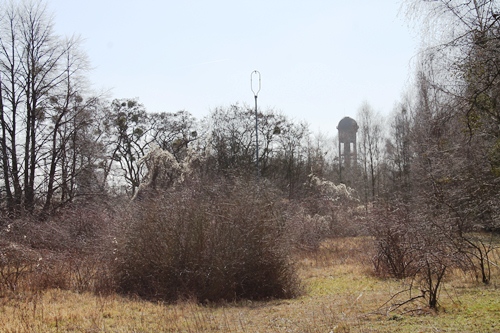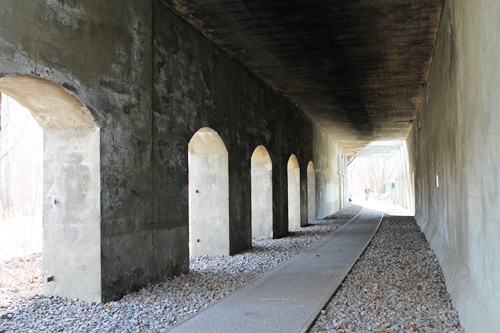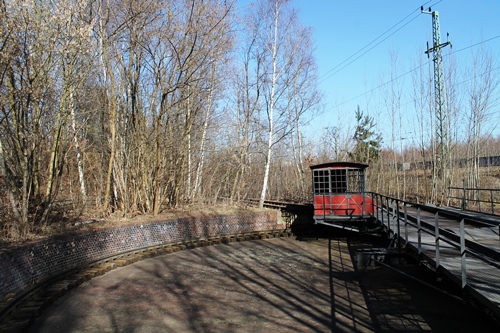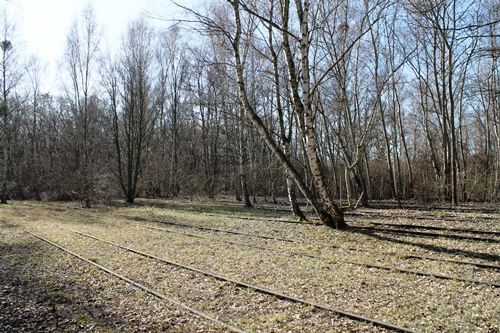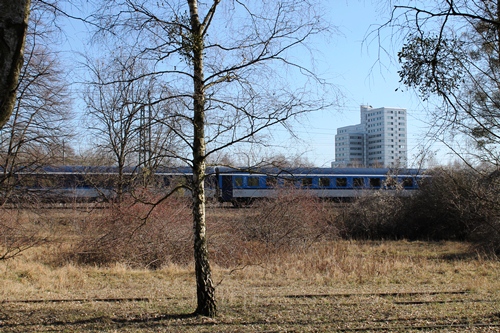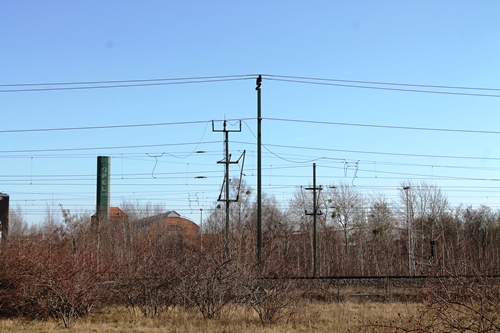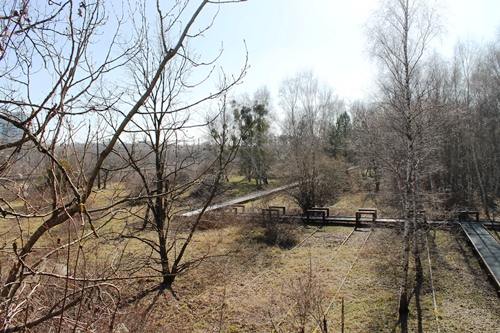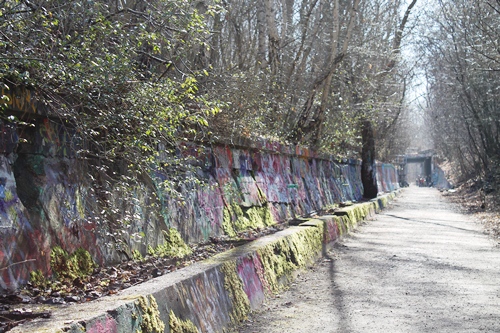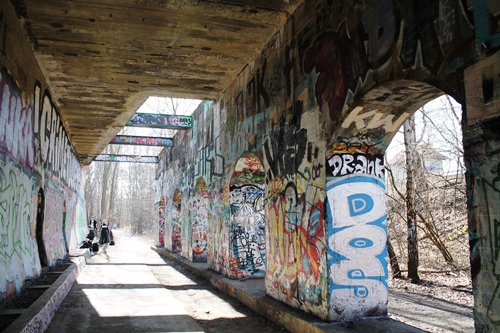From the S-Bahn platform at Priesterweg we drop down to ground level and follow the signs for the Naturpark. Even before we have left the station building we come across a gate and a friendly chap leaning against a golf cart and wearing a bright red hat. He charges me the one euro admittance fee to the park and hands Lotte a map of the grounds. An hour or so later he will still be there, to wave us on our way with a pleasant “safe journey home…” That’s a nice job, I think, as we walk into the park towards the rusting water tower that stands at its heart as a reminder of what once occupied this strip of land between the S-Bahn tracks and the intercity railway lines.
The Tempelhof switchyard was shut down in 1952, as a Berlin destroyed by the ravages of World War II came to terms with its new, divided reality. Over the next fifty years the eighteen hectre site would be left to the elements, as trees and other plant life grew up between the abandoned railway lines, and a variety of bird- and other wildlife would come to call this hidden oasis in the heart of the city home. Into the 1990s and there was a move to reopen the yard, but by now the local population and others had recognised what they had on the doorstep. Eventually the plans were shelved, the land was donated by the railway company, and the Schöneberger Südgelände Nature Park was opened to the general public.
It is a fascinating place, combining the relics of the railways – including a huge locomotive hall, the water tower, a turning circle and a lovingly restored steam engine half-hidden by the trees – with grassland and trees. One stretch of old tunnels are handed over to graffiti artists to do their thing, and as we walk through them with the smell of aerosol paints in our noses, they move aside to let not only us past but a couple of elderly Nordic Walkers, their sticks click-clacking along the public footpath.
Elsewhere in the park, where the only access to the protected area are raised walkways that lead you across the meadows and between the trees, there are a handful of families walking but every so often we have the feeling that we have the place to ourselves. And in those moments, when the railway lines on either side of the park are silent, and our fellow strollers have disappeared around a corner, there is nothing to be heard except the soft whistle of birds in the trees… it is hard to imagine we are right in the centre of Berlin, the city all around us.
We spy a red squirrel, and stop to watch it as a young photographer approaches carefully along the path. He has his camera around his neck and a baseball cap on his head. Carefully he lifts up his camera and fires off a couple of shots. The squirrel doesn’t seem to notice. Behind us there is movement in the trees and we all turn to look. The boy lifts his camera again, but unfortunately he is not quick enough. He looks at me and I shrug in sympathy and whisper…hallo! He does likewise. How often in the city do you make eye contact with a stranger, share a few words? Not often, but today, in the park, almost everyone we pass nods a greeting or a murmured hello. That’s the value of spaces such as these, I think as we reach the S-Bahn station and our friend with the red hat. And well worth a euro of anyone’s money.
Words & Pictures: Paul Scraton

